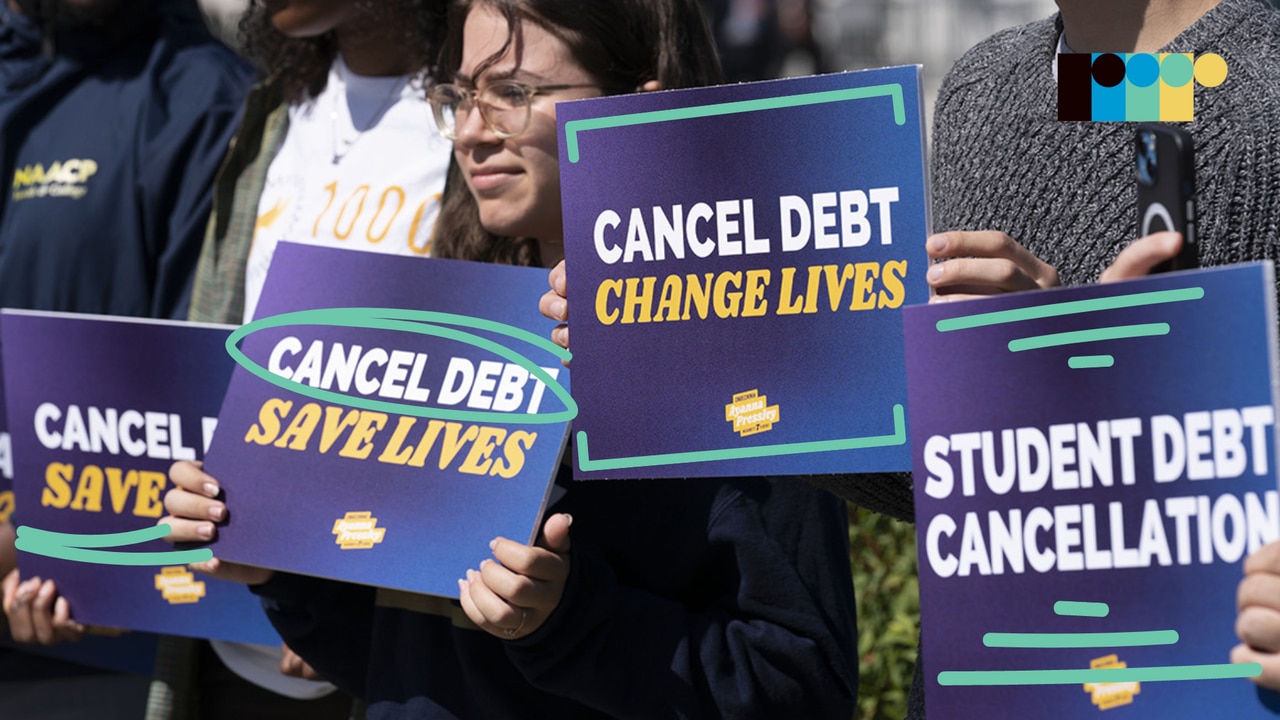Student loan borrowers could be forced into ‘unthinkable financial decisions’ if Supreme Court rules against Biden
Pinching pennies and starting a student loan debt repayment plan could soon be the reality for federal student loan borrowers.
The U.S. Supreme Court will hear two arguments – one case from six Republican-led states and another brought by two borrowers in Texas coming up on Feb. 28. These cases could determine the fate of President Biden’s student loan forgiveness plan. If the high court strikes down the plan, borrowers will have to re-start repaying their federal student loans this year.
“Should payments resume this year, borrowers will be forced to make unthinkable financial decisions like whether or not they can save for retirement, start a family or put food on the table,” Braxton Brewington, press secretary of The Debt Collective, a debt-elimination advocacy group told Reckon.
Nearly 26 million Americans who applied for relief are now in limbo, hoping justices will uphold Biden’s plan of canceling $10,000 to $20,000 in student loan forgiveness.
If SCOTUS blocks the student loan forgiveness plan, determining next steps for repayment should be at the top of federal borrowers’ lists. Here are a few ideas to consider:
What to know about a repayment plan
Repaying student loan debt is different for every borrower, especially when more than 40 million Americans have benefitted from not having to pay on them for the past three years. A common option for borrowers before the pause was selecting an income-driven student loan repayment plan.
By visiting StudentAid.gov or providing income verification to a loan servicer, federal student loan borrowers can set up a repayment plan based on their income.
With student loan payments set to start either 60 days after SCOTUS makes a decision, or 60 days after June 30 (when the pause ends), higher education experts like Mark Kantrowitz have told USA Today, “Sixty days will be enough to forgive student loan debt if the president’s plan survives.”
In the event Biden’s forgiveness plan doesn’t survive, he has a newly proposed income-driven repayment plan. This plan is meant to prevent borrowers from getting overloaded with debt by either lowering monthly payments or effectively pausing them, making payments more affordable and manageable.
His new plan is what the U.S. Department of Education is calling the “student loan safety net” and this is how it works:
- Future students’ payments on loans would be reduced by 40% and payments by low-income borrowers could be reduced by 83%
- Borrowers who make less than roughly $30,600 annually would have their monthly payments effectively paused
- As long as borrowers make their monthly payments, any unpaid interest would not be charged
- Lifetime payments are cut in half (on average) for Black, Hispanic and Indigenous borrowers
While the U.S. Department of Education notes that the income-driven repayment plan will allow borrowers to “stop seeing their balances grow due to the accumulation of unpaid interest after making their monthly payments,” the Debt Collective said the move is not enough.
“The newest proposal to reduce the years in which borrowers are forced to make payments on student debt is certainly a step forward, but it’s not nearly enough to address the crisis. We need to abolish debt traps, not change the ways in which we trap borrowers,” Brewington said.
“The only adequate solution to the student debt crisis is to eliminate every penny and work toward free, universal college so nobody has to go into debt for education in the first place.”
Other forgiveness programs
Public Service Loan Forgiveness
With the Public Service Loan Forgiveness (PSLF), federal student loan borrowers working in the public service field like government (federal, U.S. Military, state, local, or tribal) or certain non-profit organizations may qualify.
Borrowers must also have made 120 qualifying payments (10 years) toward their federal student loans while working for a public service employer.
Teacher Loan Forgiveness
The Teacher Loan Forgiveness Program allows for up to $17,500 in loan forgiveness if a full-time teacher has taught for five full and consecutive academic years in a low-income elementary or secondary school or educational agency.
This program favors educators who teach mathematics or science, they are eligible for the full $17,500 forgiveness while teachers of other subjects may only qualify for $5,000 of forgiveness.
Closed School Discharge
If a college or university closes while a borrower is enrolled or soon after they withdraw, they may be eligible for discharge from their federal student loan.
In order to apply for this program, the borrower needs to obtain their academic and financial aid records from their college or university for the closed school loan discharge.
“Borrowers need full-scale debt relief to jumpstart the economy and put cash directly in the hands of folks who need it most,” Brewington told Reckon.
